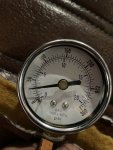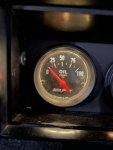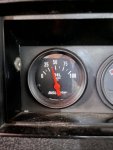I’m pretty sure this is a dumb question but I’m going to ask anyways, is oil pressure at the drivers side plug (above the oil cooler lines) an accurate place to verify oil pressure?
The reason I’m asking is all of a sudden my Autometer oil pressure gauge has been reading very low (0-10 psi), but according to a mechanical gauge temporarily hooked at the location specified above my oil pressure is fine (30 psi idle with the motor fairly warm). The Autometer sender is T’d off the stock indicator sender location. The oil pressure indicator light doesn’t come on, but I believe that’s only if there’s a total loss of pressure? Actually what is the pressure that comes on at for future reference at least?
Im assuming my Autometer gauge or sender has crapped out but as this is a brand new motor want to verify everything is in the clear. I
I
The reason I’m asking is all of a sudden my Autometer oil pressure gauge has been reading very low (0-10 psi), but according to a mechanical gauge temporarily hooked at the location specified above my oil pressure is fine (30 psi idle with the motor fairly warm). The Autometer sender is T’d off the stock indicator sender location. The oil pressure indicator light doesn’t come on, but I believe that’s only if there’s a total loss of pressure? Actually what is the pressure that comes on at for future reference at least?
Im assuming my Autometer gauge or sender has crapped out but as this is a brand new motor want to verify everything is in the clear.
 I
I





